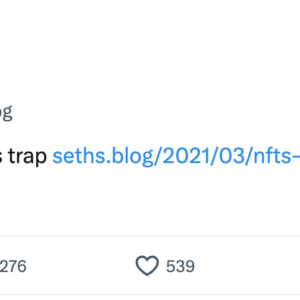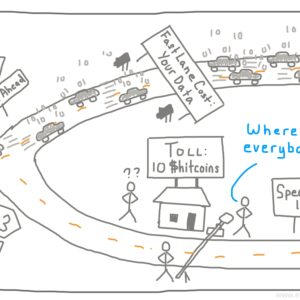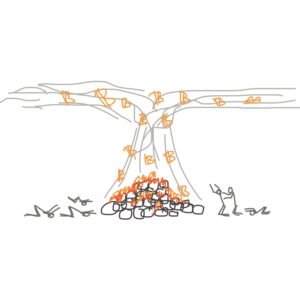4 Steps to Initial Product Growth
This post is based on a great talk given by Jared Fliesler, formerly VP of User Acquisition at Square.
How do you begin thinking about growing your startup or product? "Build it and they will come" is long gone and "Be user centric" has taken over product development but what frameworks do we have to think about growth and user acquisition specifically?
These 4 simple steps, starting from the most coarse to the somewhat finer grained, should get your feet firmly planted and your mind pointed in the right direction.
1. Identify Your Core Product Loop
Every product has a single core user experience, a set of finite steps that represent a successful use or transaction. If you had to define your product's use in as few steps as possible, what would it look like? What happens after the use is complete?

Now ask yourself, at any point in that core experience does the user naturally loop back to the beginning? Do they return and do another transaction or disappear?
If you don't get the core product loop right, it hardly matters how much fuel you throw into marketing because the users will skip out the other side and along their merry way. You need to ensure that there is a finite path for continued use baked right into the core product loop (or it's not really a loop).
Even if you aren't lucky enough for your product to become a core part of the user's daily life, you need to identify the elements which will keep that user returning over time. Marketing tactics fade, but a great product loop will produce sustainable growth.
2. Define Your Growth Metric
You should only have a single core metric that defines successful growth. This means it needs to cover not just the quantity of new users but also their quality. Identifying and focusing on this metric is one of the most important things you can do. Having a single metric prevents the dangerous ambiguity of mixed signals.
Everything about this starts with the users. Your users almost always give you some combination of the following four values:
- Money — they pay for your product
- Views — they visit your product
- Content — they generate content for your product
- Referrals — they bring in more users
Your most important task is to find that small subset of users who are your BEST users. The ones who provide the strongest value to your platform. Then reverse engineer them. Which of those four values do they provide? How would you then define a typical "best" user in terms of measurable behavior?
Some great historical examples are Facebook (user gets 7 friends in 10 days), Twitter (user follows 30 people and at least 10 of them are not just straight follow-backs), and … This Quora post provides some insight to help you identify this core metric.
Once you have that metric which defines your best user, focus on it obsessively. It should be the headline of every status meeting. All of your future growth activities should be meant to drive that metric forward.
The final step is to define success. What is your target rate of growth in this metric? 10% monthly? If you don't pick success ahead of time, you won't have the backbone to kill the 90% of future experiments which end up performing okay but not great.
3. Lay Out a List of Focus Areas and Initial Tactics
When coming up with the core set of areas to focus on growing your product, whether through marketing, community or partnerships, be a student of history and competition. Learn the lessons of the past and competition, they will be a great guide to get you started.
See what other fast growing and successful products have done and are doing… products which target the same audience as you. They could be very different products, but if they're reaching the customers you should find out why and consider how it might fit into your future channel mix. Focusing only on similar product offerings is more typical but often much less useful.
A classic example of a commonly adapted past tactic among communities is the "we gave them their first friend" case, exemplified by MySpace, which automatically made you friends with "Tom" when you signed up. Investigating that friendship prompted users to learn all kinds of things about the platform instead of just listening to the crickets of their weak social life.
This step is one to be creative and think outside the box but also to listen to the lessons of the past.
4. Test and Measure
Once you've identified your core areas of focus, whether they are partnerships with other companies or ways to hack a sense of community, it's time to test them out. Prioritize your experiments, define success for each (remember your core growth metric's success criteria from above??), pull the lever and examine the data. Tweak and rerun where there's potential hope but ruthlessly move on when experiments can't meet your hurdle.
Start as macro as possible — this isn't the time to over optimize for pixel positioning. Note that this post is titled "4 Steps to Initial Product Growth"… the more detailed things can wait until you've taken the low hanging fruit in other areas.
A/B test large scale changes and batches of changes that effect the entire look and feel and experience of your product first so you avoid over-optimizing a local maxima. Good tactics might win the battle but a bad strategy will always lose the war. Think strategically.
Not a fan of wasting time? Use tools! Don't rebuild the wheel every time you need to set up A/B testing or cohort analysis on your site. There are tons of great tools out there so just use them and spend your development cycles building experiments instead.
A final note — you are defining success based on your core growth metric but be mindful that other metrics can trigger failure. Would Facebook accept a test that increased their core growth of 7-friend-in-10-days users at the cost of reducing overall site engagement 20%? This might come up if you're over-optimizing for early revenue or signups at the cost of user experience.
Profit!
Building and growing a startup or new product is tough enough without having a weak or uncertain growth strategy. Hopefully this has helped you think clearly about how to approach the early steps of your growth so you won't waste your time in a morass of uncertainty and false starts.
This post was based on just a portion of Jared's talk, so I'll post a link to the video when it becomes available.






